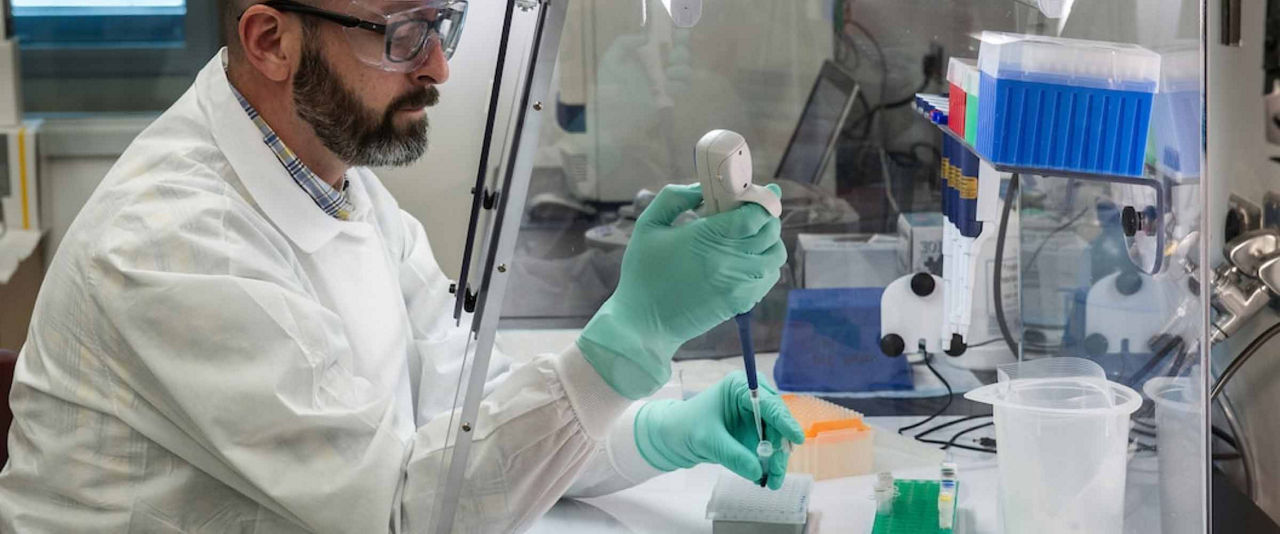Gene knockdown models are useful when a reduction in gene expression is desirable rather than permanent knockout of the gene of interest. Gene knockdowns are frequently used when working with essential genes that cannot be feasibly targeted at the gene level, for validating targets for therapeutics, mimicking the action of therapeutics or gene dosage studies. For most applications, the knockdown needs to be inducible and reversible or restricted to specific cell types or tissues.
Custom Model Generation
Knockdown Mice

Taconic’s RNAi-mediated knockdown mouse model:
At Taconic, we leverage RNAi technology and combine it with inducible promoters and cre/loxP technology to deliver a product where high-specificity shRNAs can be expressed in a temporal and reversible manner. While the inducible promoters offer the distinct advantage of reversibility to restore wildtype protein levels, the cre/lox technology allows for constitutive knockdown in a cell type-specific manner.
- shRNA mediated knockdown design
- Regulation of shRNA mediated knockdown
- Customization of your knockdown model
shRNA mediated knockdown design
- Multiple shRNAs against the gene of interest are screened and the shRNA(s) that will be used for the generation of mouse line(s) will be selected according to the knockdown potency in ES cells and potential off-target effects.
- The shRNA of choice is placed under the control of the fusion promoter, H1/TetO.
- The tetracycline repressor, iTetR, is placed under the control of the CAG promoter, and this expression cassette is flanked by loxP sites allowing for tissue-specific shRNA knockdown.
- An exchange vector containing the shRNA and iTetR expression cassettes is used for targeted insertion into the ROSA26 locus in C57BL/6NTac ES cells.
Regulation of shRNA mediated knockdown
- In the absence of doxycycline, shRNA expression is inhibited by iTetR binding to the TetO operator sequences in the promoter.
- When doxycycline is introduced, it binds to iTetR, thus preventing iTetR from binding to the promoter, thereby allowing for expression of the shRNA.
- Withdrawal of doxycycline restores wildtype levels of the target protein over time, which makes this inducible system also reversible.
- If a tissue- specific constitutive knockdown is desired, the knockdown mouse line can be bred with an appropriate Cre-expressing mouse line, which results in removal of the iTetR expression cassette in the progeny, and thus allows for constitutive shRNA expression specifically in the cells of interest.
Customization of your knockdown model
The knockdown allele can be customized to suit your needs and Taconic’s experts are available to determine feasibility of the design. Some potential knockdown model design applications include:
- Multiple shRNAs against the same target, in cases where knockdown efficiency with a single shRNA is not efficient.
- Double gene knockdowns, where shRNAs can be used to simultaneously knockdown two genes.
- Isoform specific knockdowns, where shRNAs can be designed to only target specific mRNA isoforms.
- Allele-specific knockdowns, where shRNAs can be used to target the disease allele, leaving the wildtype allele intact.
- miRNA induction, similar to the shRNA knockdown design
References:
- Soustek MS, Falk DJ, Mah CS, Toth MJ, Schlame M, Lewin AS, Byrne BJ. Characterization of a transgenic short hairpin RNA-induced murine model of Tafazzin deficiency. Hum Gene Ther 2011; 22(7): 865-71
- Ellenwood-Yen K, Keilhack H, Kunii K, Dolinski B, Connor Y, Hu K, Nagashima K, O’Hare E, Erkul Y, Di Bacco A, Gargano D, Shomer NH, Angagaw M, Leccese E, Andrade P, Hurd M, Shin MK, Vogt TF, Northrup A, Bobkova EV, Kasibhatla S, Bronson RT, Scott ML, Draetta G, Richon V, Kohl N, Blume-Jensen P, Andersen JN, Kraus. PDK1 attenuation fails to prevent tumor formation in PTEN-deficient transgenic mouse models. Cancer Res 2011; 71 (8): 3052-65
- Yang R, Castriota G, Chen Y, Cleary MA, Ellsworth K, Shin MK, Tran J-Lv, Vogt TF, Wu M, Xu S, Yang X, Zhang BB, Berger JP, Qureshi SA. RNAi- mediated germline knockdown of FABP4 increases body weight but does not improve the deranged nutrient metabolism of diet-induced obese mice. Int J Obes (Lond) 2011; 35(2): 217-225
- Zaccagnini G, Maimore B, Fuschi P, Maselli D, Spinetti G, Gaetano C, Martelli F. Overexpression of miR-210 and its significance in ischemic tissue damage. Scientific Reports 2017; 7:9563
Featured Resources
miRNA Publications:
Gebeshuber CA, Kornauth C, Dong L, Sierig R, Seibler J, Reiss M, Tauber S, Bilban M, Wang S, Kain R, Böhmig GA, Moeller MJ, Gröne HJ, Englert C, Martinez J, Kerjaschki D. (2013) Focal segmental glomerulosclerosis is induced by microRNA-193a and its downregulation of WT1. Nat Med. 19(4):481-7.
Jordan SD, Krüger M, Willmes DM, Redemann N, Wunderlich FT, Brönneke HS, Merkwirth C, Kashkar H, Olkkonen VM, Böttger T, Braun T, Seibler J, Brüning JC. (2011) Obesity-induced overexpression of miRNA-143 inhibits insulin-stimulated AKT activation and impairs glucose metabolism. Nat Cell Biol. 13(4):434-46.
Kornfeld JW, Baitzel C, Könner AC, Nicholls HT, Vogt MC, Herrmanns K, Scheja L, Haumaitre C, Wolf AM, Knippschild U, Seibler J, Cereghini S, Heeren J, Stoffel M, Brüning JC. (2013) Obesity-induced overexpression of miR-802 impairs glucose metabolism through silencing of Hnf1b. Nature. 494(7435):111-5.
RNAi Publications:
Gerrits H, Paradé MC, Koonen-Reemst AM, Bakker NE, Timmer-Hellings L, Sollewijn Gelpke MD, Gossen JA. (2014) Reversible infertility in a liver receptor homologue-1 (LRH-1)-knockdown mouse model. Reprod Fertil Dev. 26(2):293-306.
Michalak EM, Nacerddine K, Pietersen A, Beuger V, Pawlitzky I, Cornelissen-Steijger P, Wientjens E, Tanger E, Seibler J, van Lohuizen M, Jonkers J. (2013) Polycomb group gene Ezh2 regulates mammary gland morphogenesis and maintains the luminal progenitor pool. Stem Cells. 31(9):1910-20.
Vink PM, Smout WM, Driessen-Engels LJ, de Bruin AM, Delsing D, Krajnc-Franken MA, Jansen AJ, Rovers EF, van Puijenbroek AA, Kaptein A, Nolte MA, Garritsen A, van Eenennaam H. (2013) In vivo knockdown of TAK1 accelerates bone marrow proliferation/differentiation and induces systemic inflammation. PLoS One. 8(3):e57348.
















.jpg)

.jpg)
.jpg)
.jpg)
.jpg)





.jpg)


.jpg)
.jpg)




.jpg)




.jpg)

.jpg)






